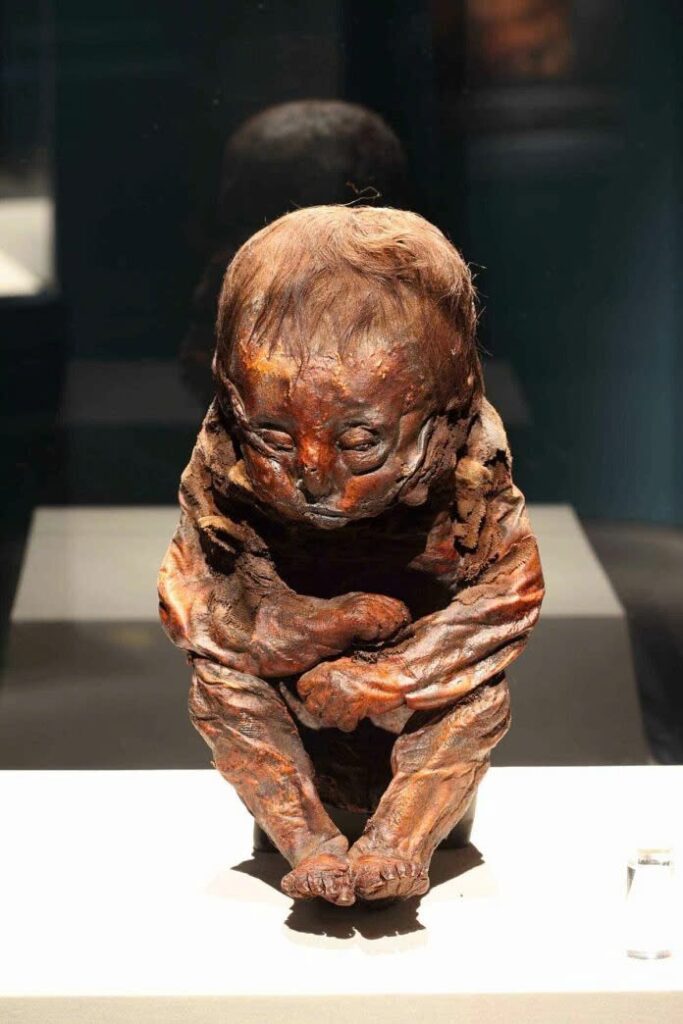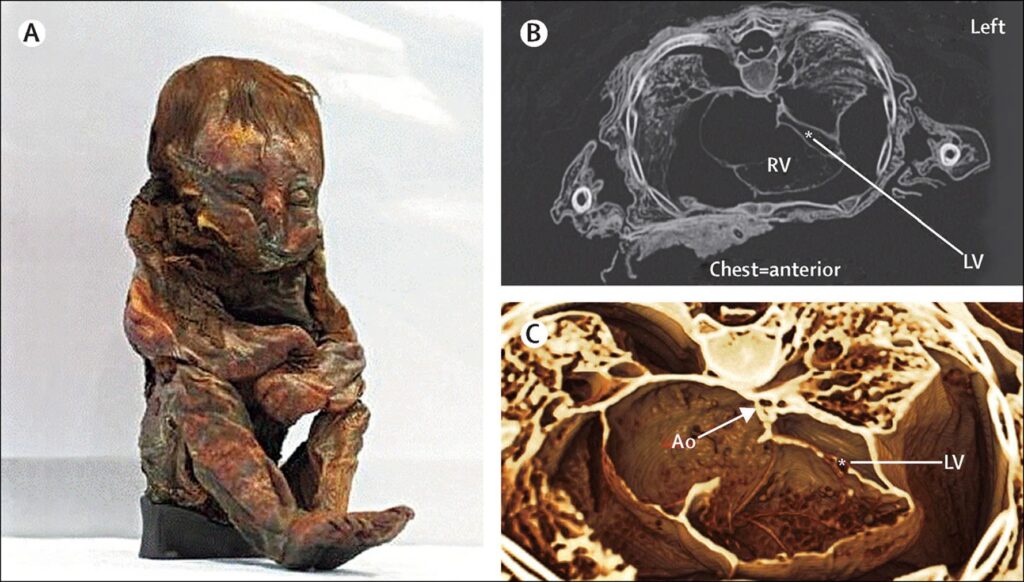Unveiling the Secrets of the Detmold Child

The Detmold Child, an ancient Peruvian mummy dating back 6,500 years, has recently captured the attention of scientists and history enthusiasts alike. This remarkable specimen, predating the famous Tutankhamun by 3,000 years, has been the subject of an groundbreaking study using advanced technology to uncover its long-held secrets.
A Glimpse into Ancient Health Challenges

Through high-resolution CT scans, researchers from the North Rhine Westphalia Heart and Diabetes Centre (HDZ NRW) and the Lippe State Museum have made startling discoveries about the infant’s life and death. The scans revealed that the child, aged between 8 to 10 months at the time of death, suffered from a rare congenital heart malformation known as hypoplastic left heart syndrome (HLHS). This condition, where parts of the left side of the heart fail to develop fully, typically leads to early infant mortality.
Multiple Health Issues Unveiled

The examination also uncovered evidence of vitamin D deficiency, turricephaly (an abnormally shaped, conical skull), and signs of a pulmonary infection, possibly tuberculosis or pneumonia. This combination of health issues likely contributed to the child’s untimely death.
From Exhibition to Ethical Debate

After touring the United States for three years as part of the Mummies of the World exhibition, the Detmold Child has returned to its home at the Lippe State Museum in Germany. This exhibition, featuring over 150 mummies from various cultures, sparked a debate about the ethics of displaying human remains.
Educational Value vs. Ethical Concerns
Proponents argue that such exhibitions serve a crucial educational purpose, offering unique insights into ancient civilizations and fostering a deeper understanding of our shared human heritage. However, the debate continues over the appropriateness of showcasing human remains in public settings.

As the Detmold Child continues to intrigue visitors at the Lippe State Museum, it stands as a testament to the advanced medical knowledge we now possess and the enduring mysteries of our ancient past. This 6,500-year-old mummy not only provides valuable insights into ancient Peruvian civilization but also prompts us to reflect on the ethical considerations surrounding the study and display of human remains in the pursuit of knowledge.

